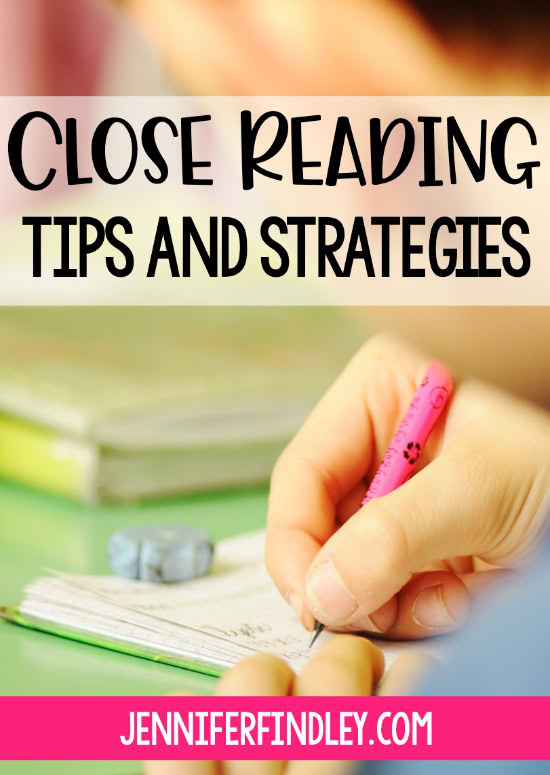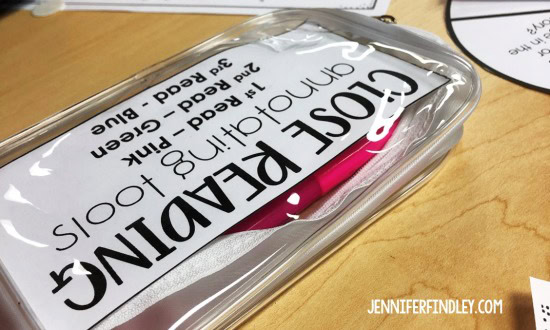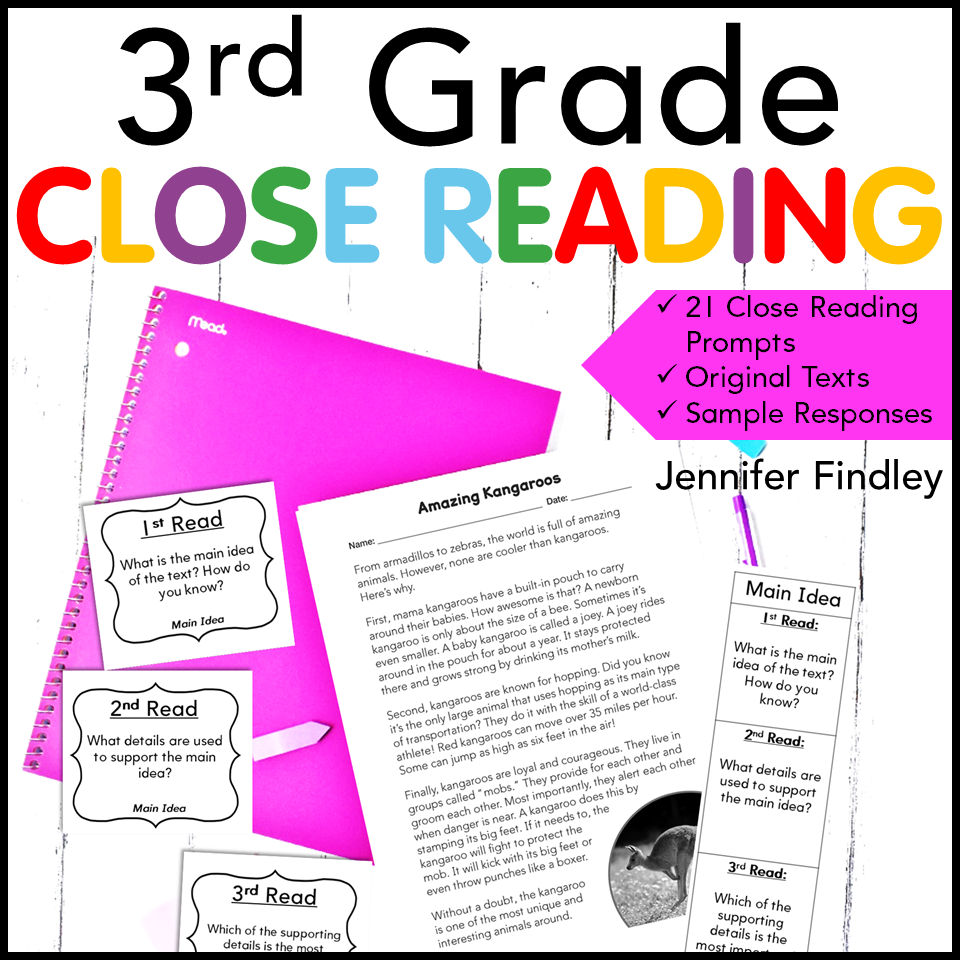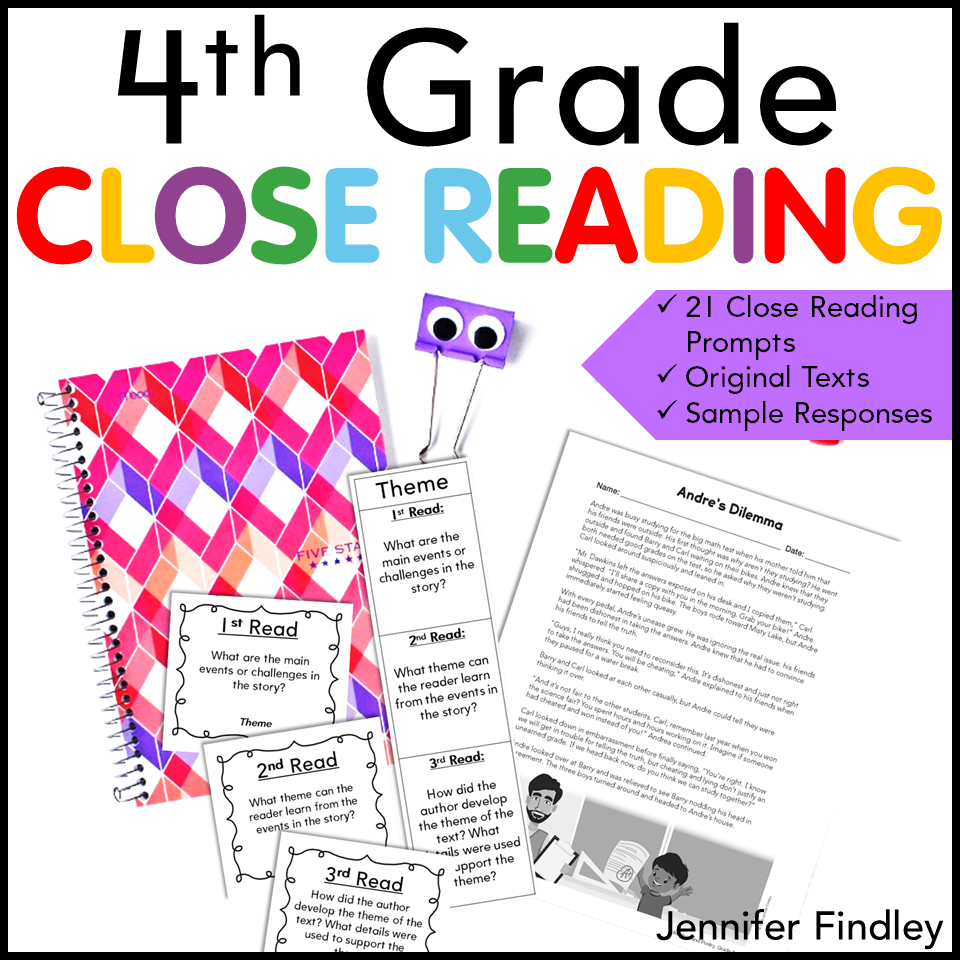Close reading is a great way to get students to dig in and analyze a text. Close reading, when done right, allows for rich discussion and reflection while growing your students as critical, analytical readers. In this post, I will share close reading tips and strategies to help you implement this reading strategy into your instruction.

Close Reading Tips and Strategies
#1 – Introduce close reading early on, and provide ongoing practice throughout the year. I like to use this anchor chart when introducing close reading to help my students understand the purpose and focus of close reading.
#2 – Have one focus question or prompt per read. Don’t bombard your students with pages of questions for each read. This will burn them out and is not the true focus of close reading.
#3 – Have specific annotation directions for each read. My go-to annotation direction is to have the students highlight, flag, or mark evidence to respond to the question/prompt. For example, if the close reading prompt is to identify the main character’s traits, the students can highlight details used to support the trait they chose.
#4 – Color-code the annotation tools to organize details for each read. This will help the students keep their annotations organized so they can actually refer back to them as they are writing about or discussing the text. An added bonus is that it will help you keep your students accountable.
#5 – Explicitly model the annotation process (and then model some more). This one takes time, but it is worth it. Break down the process for your students and talk through a text while you annotate it, explaining why you chose to annotate specific details from the text.
#6 – Model how to use the annotations to respond both verbally and in writing to the prompt. Annotations will seem pointless to your students if they don’t have a purpose. Show students how to refer back to their annotations when they are discussing or writing about a text.
#7 – Have the expectation that students should be prepared to defend, explain, and use their annotations when responding to texts. This will help with over-annotating or annotating without intention. However, if students are annotating ineffectively, I recommend stepping back and modeling the process again.
#8 – Remember, there is no right annotation and often no one right answer. If the students can defend and use their annotations to explain their ideas, then the annotations are effective.
***Want more tips specific to annotating texts (including free printables) —-> CLICK HERE!
#9 – Students discussing the text and their understanding should be the focus, with the teacher guiding it as needed. Close reading should not be an isolated process. Invite the students to discuss the text and their understandings after each read.
#10 – Small-group close reading instruction works best for engagement, modeling, and accountability.
#11 – The purpose of each read is to provide new evidence and new understandings. If the students have already reached that level (as evident by their discussions), don’t be afraid to skip or modify a prompt.
#12 – If students can zone in on exactly the area needed to close read and annotate, let them. Then challenge them to look in other areas of the text for more evidence.
#13 – Use close reading strategies and prompts that are transferrable and can be used again and again. Yes, the prompts should be text-dependent in the sense that the students need the text details and evidence, but they should not be highly specific to one text. Using prompts that are transferrable to other texts will allow you to get way more mileage out of your close reading instruction and help the students apply the strategies to new texts and other reading situations.
#14 – Keep a collection of excerpts and books that lend themselves to different close reading strategies (and ideally close reading strategies that fit your specific reading standards and the needs of your readers).
#15 – The students may struggle with this type of instruction at first. Remember that productive struggle is important for learning. Model, do think-alouds, and provide additional support as needed.
What close reading tips do you have to share that have worked for your students? Let us know in the comments!












Leave a Comment